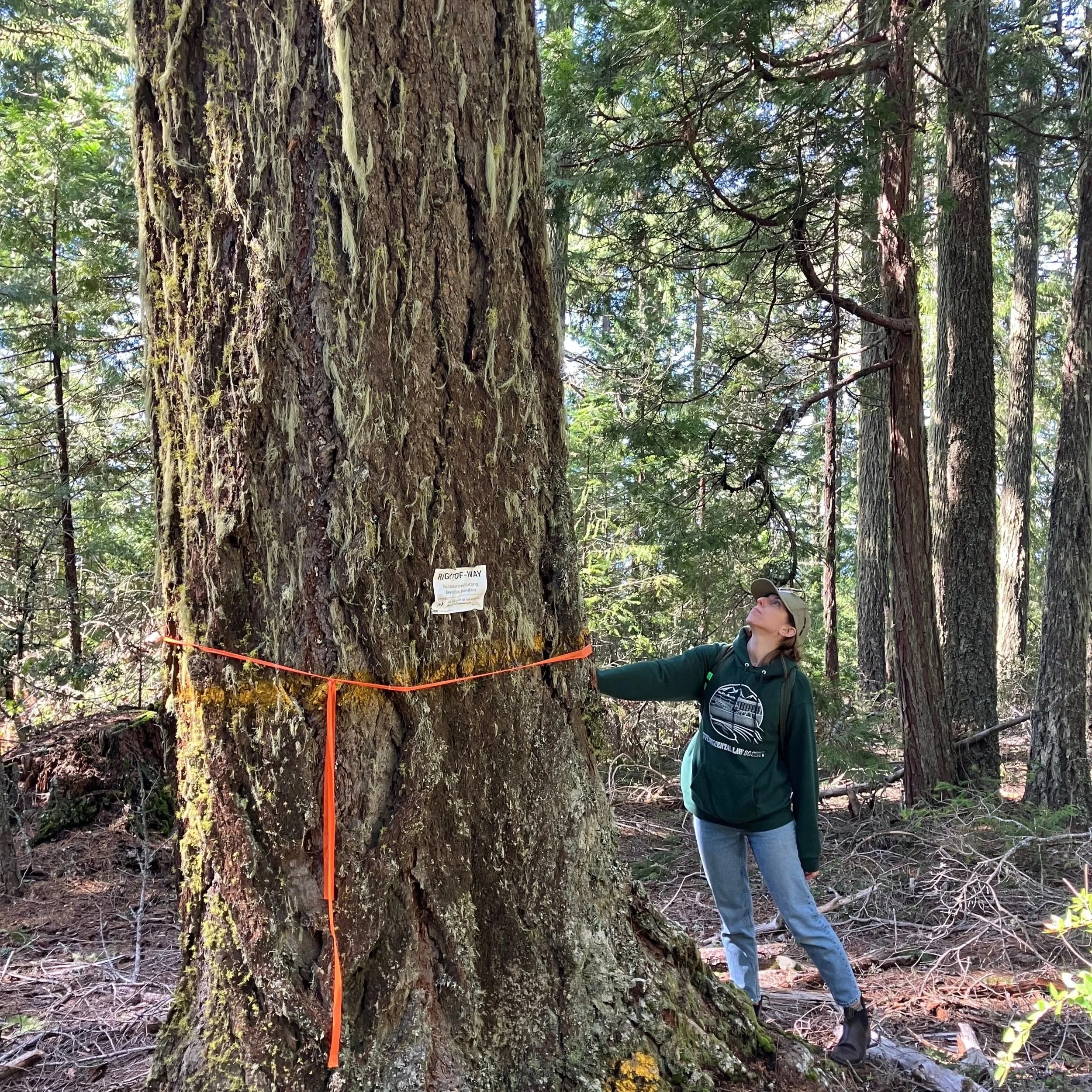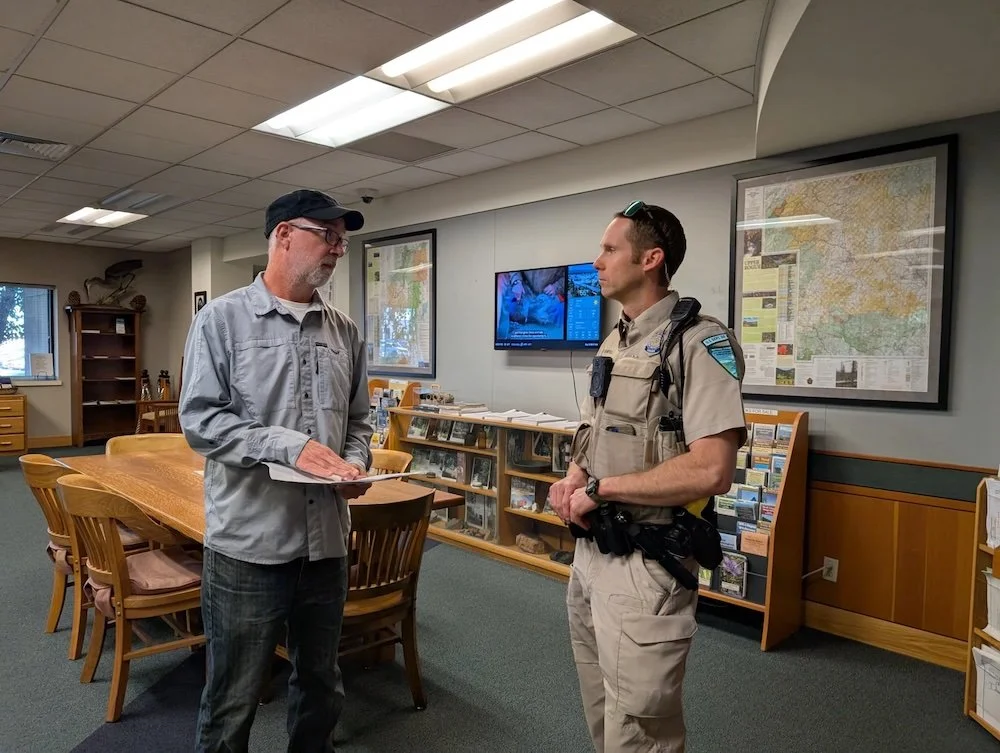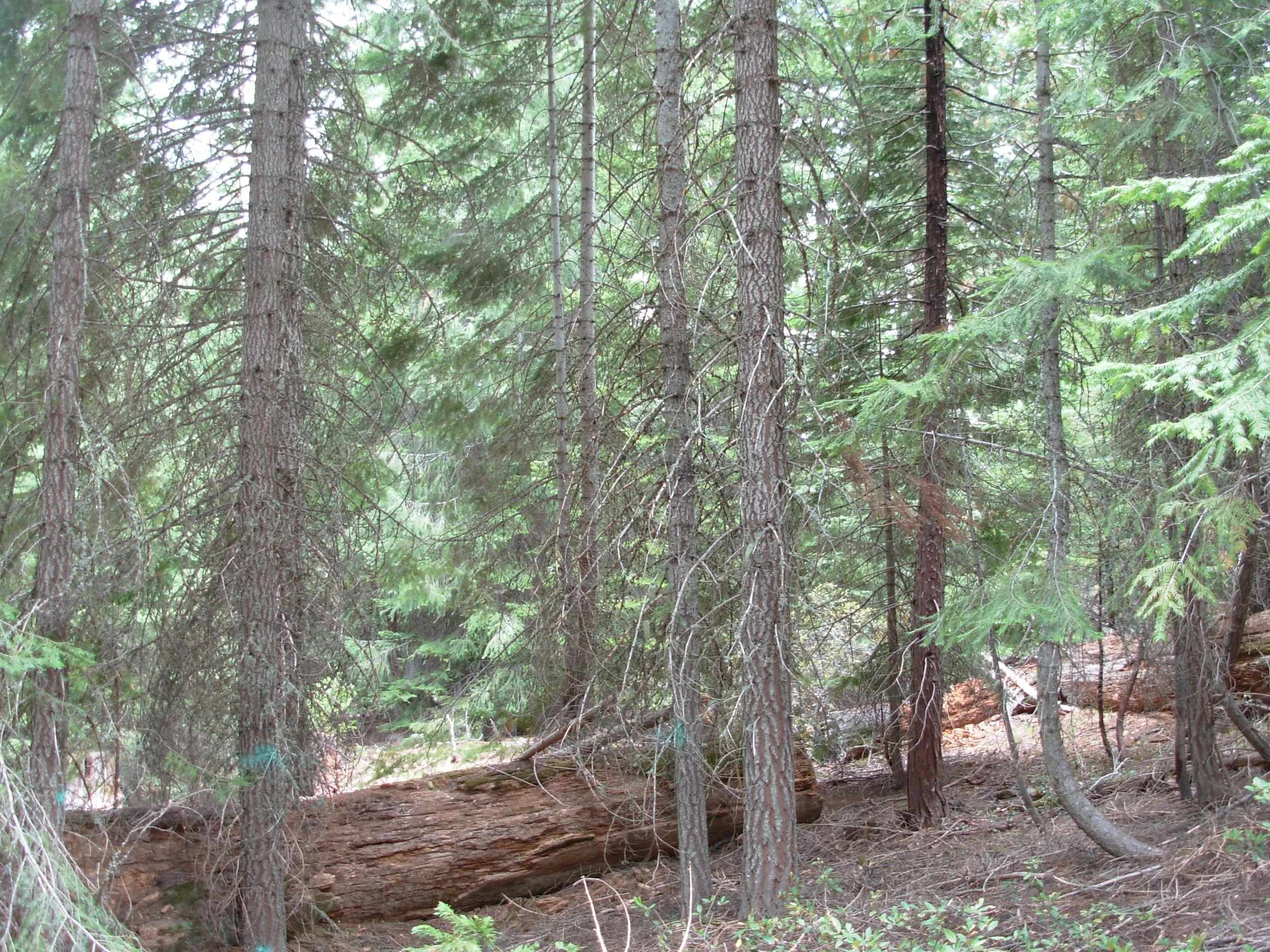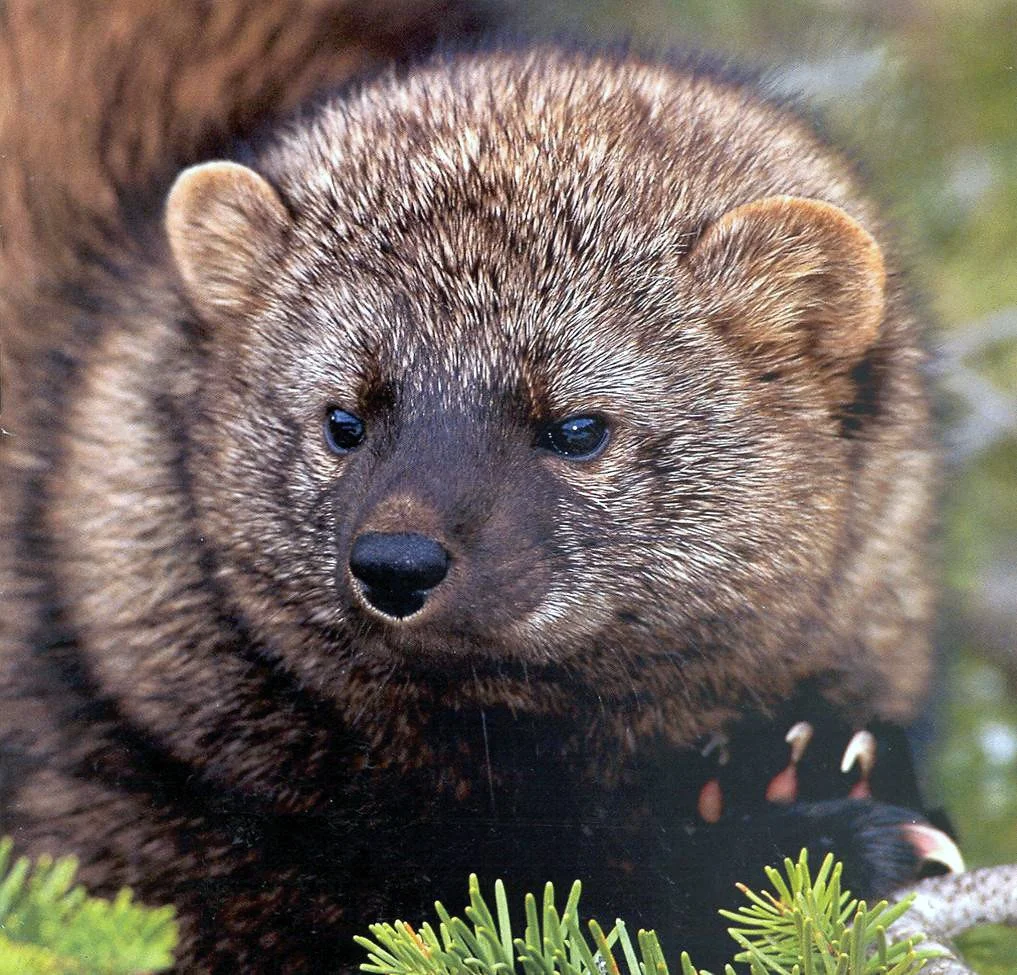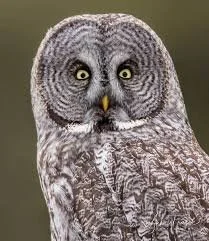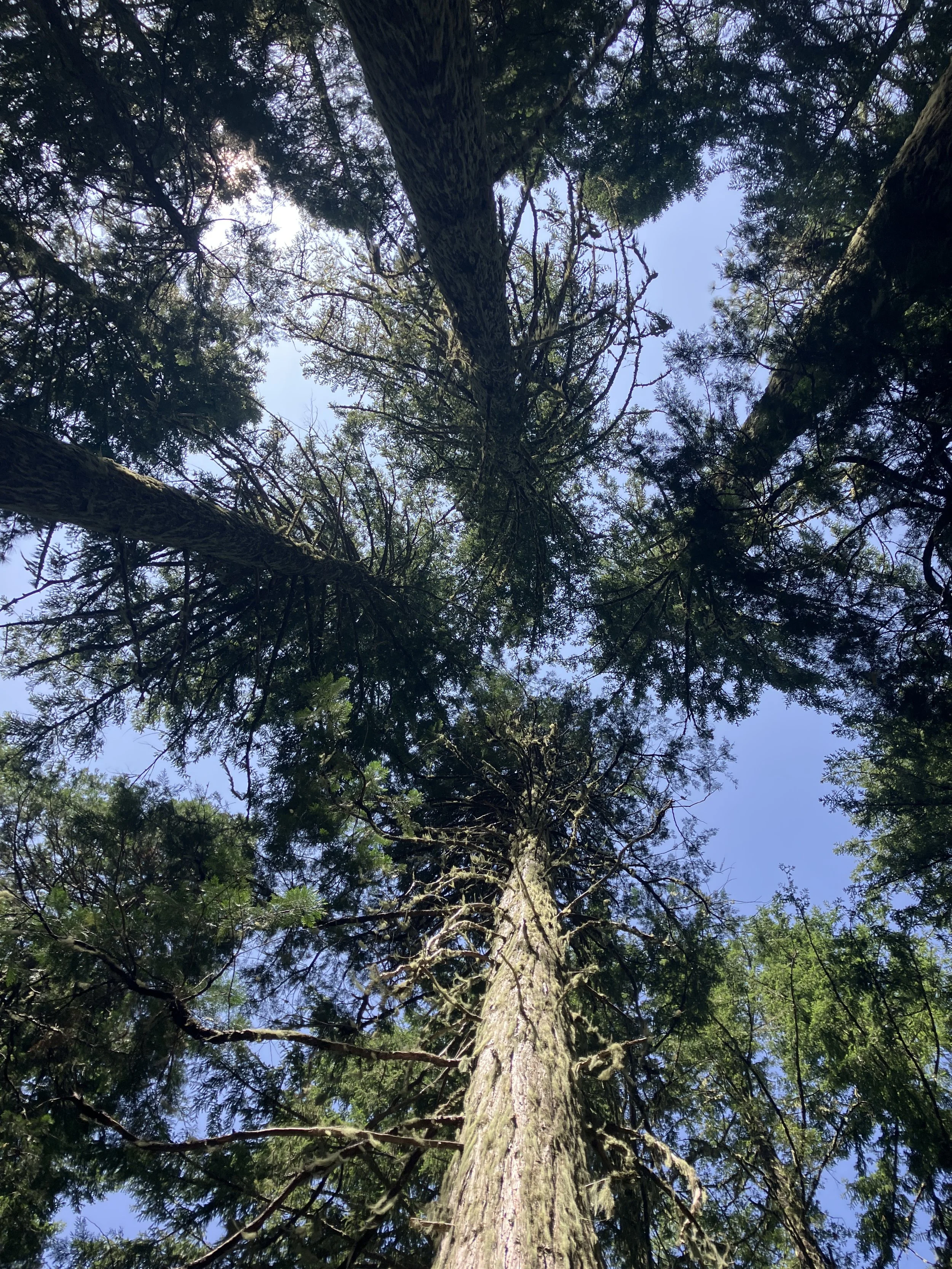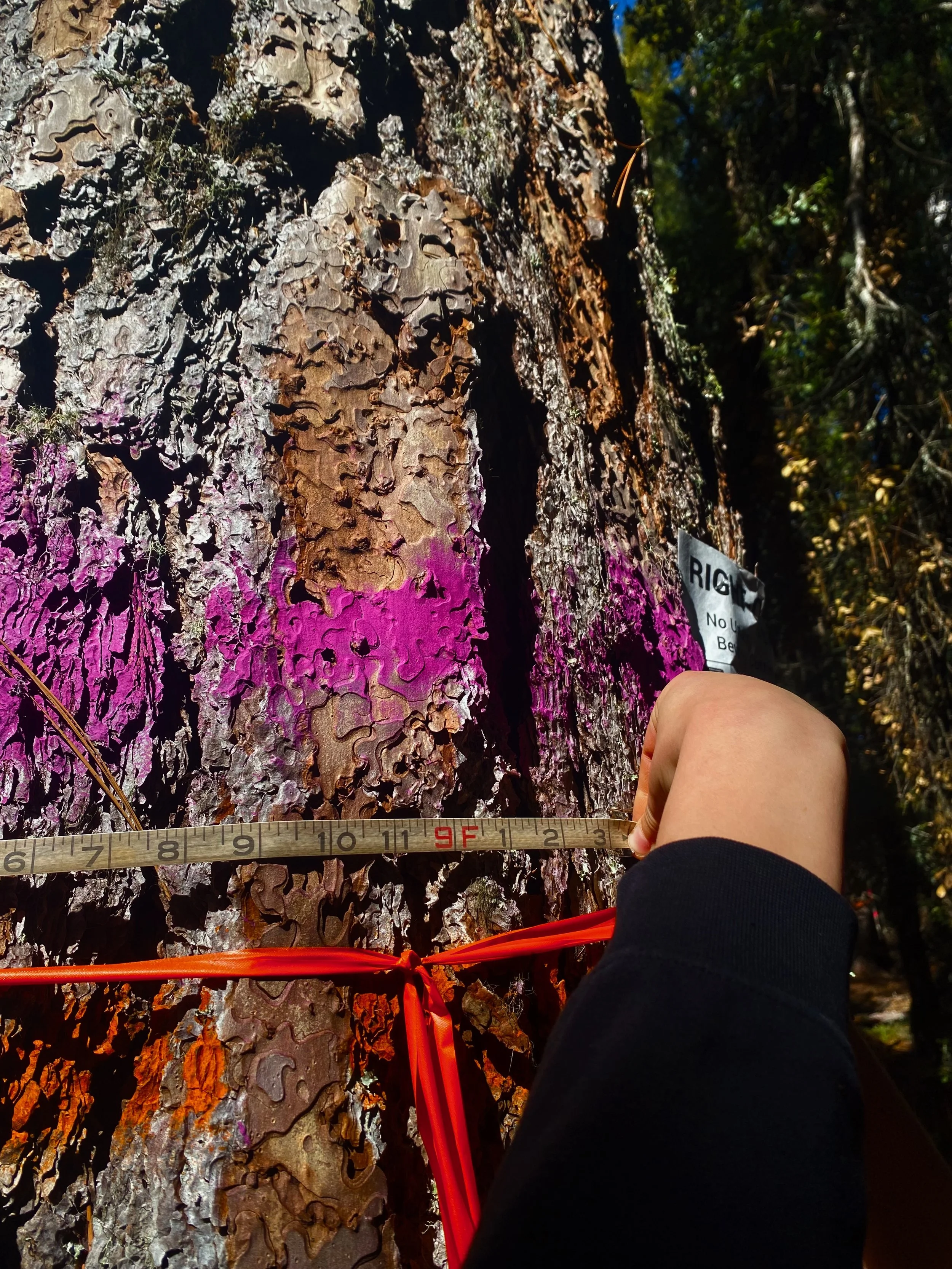Forest restoration or exploitation? Comparing recent BLM & Forest Service timber sales in the SW Oregon Cascade mountain foothills
There are currently two very large timber sales proceeding on public lands east of I-5 in southern Oregon. Both will produce a great deal of timber volume, both were planned simultaneously, and both were planned by federal agencies that manage federal public lands—but that is where the similarities end. As the Forest Service attempts to balance logging, water quality and wildlife habitat in the Snowy Butte timber sale, the Medford Burueau of Land Management (BLM) is focused only on timber production in the Last Chance old-growth timber sale project.
Image from a groundtruthing field trip to the Last Chance project. Credit: George Sexton
Image from the Snowy Butte project area. Credit: USFS
While the Forest Service is far from perfect, and while there are certainly many BLM employees who care about forests and wildlife, the differences between the two large timber projects paint a stark picture. Here are a dozen significant distinctions in how the Forest Service approached the Snowy Butte timber sale compared to how the BLM treats public lands and public input in the Last Chance timber sale area:
1 - Implementing the Forest Plan
The Forest Service Snowy Butte timber sale abides by the standards and guidelines contained in the Northwest Forest Plan, which includes a “survey and manage” program to protect old-growth associated wildlife species and an “aquatic conservation strategy” designed to protect and restore watershed values. In contrast, the BLM planned the Last Chance timber sale utilizing the 2016 SW Oregon BLM Resource Management Plan—in which the BLM ditched both the survey and manage program and the aquatic conservation strategy in order to maximize timber volume production at the expense of other forest values.
2 - Old-growth forests for wildfire resilience & wildlife refugia
In the Snowy Butte project, the Forest Service recognized that old-growth forests classified as spotted owl “nesting, roosting, and foraging” habitat are more resilient to fire than are younger forest stands and decided to retain these forest types while focusing thinning outside of old-growth fire refugia. The BLM’s Last Chance timber sale does not acknowledge or recognize the concept of old-growth fire refugia and calls for the conversion of 3,600-acres nesting, roosting, and foraging habitat into less-resilient young timber stands for harvest.
Grave Creek, Take A Chance unit within the Last Chance timber sale project. Credit: Sydney Wilkins
3 - Treatment of riparian reserves
The Last Chance timber sale specifically targets trees in the secondary shade zone of fish-bearing streams (such as Grave Creek) for logging, builds new logging roads through riparian reserves, and allows for yarding activities through the aquatic reserves. The Snowy Butte timber sale only thins riparian reserves if they consist of dense, unnatural second-growth timber plantations and protects riparian areas from yarding and road construction impacts.
4 - Building new logging roads vs utilizing existing logging roads
The BLM has achieved some attention and notoriety at Last Chance for proposing a vast suite of new logging road construction through old-growth forests and trees that are supposedly marked for retention, but that will in fact be logging to facilitate new logging roads and landings. Many of these proposed road widths exceed 50’ in width and wind around the forest through the oldest forest stands in the project area. In Snowy Butte the Forest Service has located most of their new temporary logging roads on previously disturbed yarding or roading sites, has not routed them through old-growth stands, and has narrowly limited their width.
5 - Consideration for rare, old-growth-associated wildlife species
Several of the Last Chance old-growth timber sales units are located in forests that were previously retained to protect known occupied red tree vole sites. Now the BLM intends to extirpate (kill) voles living in trees that were previously protected by agency biologists. At Snowy Butte, the Forest Service is retaining forests and trees that are known to contain populations of rare old-growth associated wildlife species.
The Medford District BLM closed the Last Chance timber sale auction to the public and press despite KS Wild’s 20+ year history peacefully attending auctions. Read the JPR report of this incident here.
6 - Collaboration with the public
The BLM literally shut the public and the press out of the Last Chance old-growth timber sale auction that occurred behind closed doors at the Medford Interagency Office. In contrast the Forest Service has conducted field tours, held open meetings, and encourages the public to view the business of public land management along every step of the way.
7 - Purpose & need for the projects
While the Forest Service is driven by orders to produce timber volume from public lands, they also include project objectives to protect watersheds and wildlife, restore meadows, and address the effects of fire exclusion in the “purpose and need” for the project. The BLM’s only motivation in the Last Chance timber sale is to meet an arbitrary timber volume target that they have assigned themselves—all other public land values are treated as secondary. The BLM even refers to rejected wildlife mitigation measures as “RMP (Resource Management Plan)-extra” which is agency-speak for ignoring the needs and wellbeing of wildlife in the pursuit of timber volume.
White fir have densely proliferated in many parts of the region, increasing fire hazard. Credit: George Sexton
8 - Forest management for restoration vs forest management for profit
Snowy Butte is likely to be one of the few federal timber sales “scaled” and appraised based on the timber volume of white-fir trees to be removed. This is because the Forest Service is attempting to reverse the effects of decades of fire-exclusion that has caused white-fir to proliferate in the forest stands thereby increasing fire hazard. In contrast, the BLM continues to target native old, fire-resilient mixed conifer forests for logging at Last Chance.
9 - Including—or ignoring—the public for projects on their public lands
The Medford BLM timber sale planning process has become more and more insular and immune to public involvement. The BLM ignores requests for collaboration and suggestions from the public on how to reduce the environmental impacts of its timber sales. Much of the BLM’s environmental “analysis” for the Last Chance project occurred after the BLM had marked the timber sale units and offered the timber sales at auction such that the analysis did not influence the layout of the project. Forest Service planners included mitigation measures suggested by the public in the layout and design of the Snowy Butte timber sale. The Forest Service has engaged in numerous field trips with the public and stakeholders and listened to concerns and incorporated proposals from outside the agency.
10 - Surveying for rare species
The Forest Service has conducted wildlife surveys for rare species including Pacific Fisher, Great Grey Owls, and Western Pond Turtles. The BLM does not care if old-growth forest stands slated for logging at Last Chance contain rare wildlife species of concern.
11 - Impacts on wildlife, soils, & aquatic resources
The existing and threatened forest canopy in the Last Chance units provide critical Northern Spotted Owl habitat and thermal cover for ungulates like elk. Credit: George Sexton
The Forest Service has developed mandatory “project design criteria” to reduce impacts to wildlife including seasonal protections for nesting migratory birds and buffers for Great Grey Owl sites. The BLM project design features and best management practices containing timber sale mitigation measures are generally optional and are regularly waived by the timber sale administrator such that yarding often occurs through sensitive plant buffers and seasonal restrictions to protect soils and aquatic resources are waived at the request of the timber industry.
12 - Forest canopy for wildlife
The Snowy Butte timber sale includes the retention of 60% forest canopy to provide crucial winter thermal cover for elk and contains seasonal restrictions to protect ungulates in the project area. The BLM’s Last Chance timber sale does not consider elk, protect elk habitat, or even acknowledge the existence of ungulates in these forest stands.
But don’t take our word for it. Do your own deep dive into the Forest Service and BLM documents regarding these two timber sales. Or better yet, use the agency maps to go see the proposed timber sale units for yourself. Contact KS Wild if you would like assistance deciphering the agency documents or utilizing their maps.
KS Wild is tracking the Last Chance timber project as the biggest threat to old-growth on our region’s federal public lands.
We encourage you to visit our Last Chance tracking page to see photos and videos, get project stats, and dive deeper into the Medford BLM’s continuous target on healthy forestland for profit.


